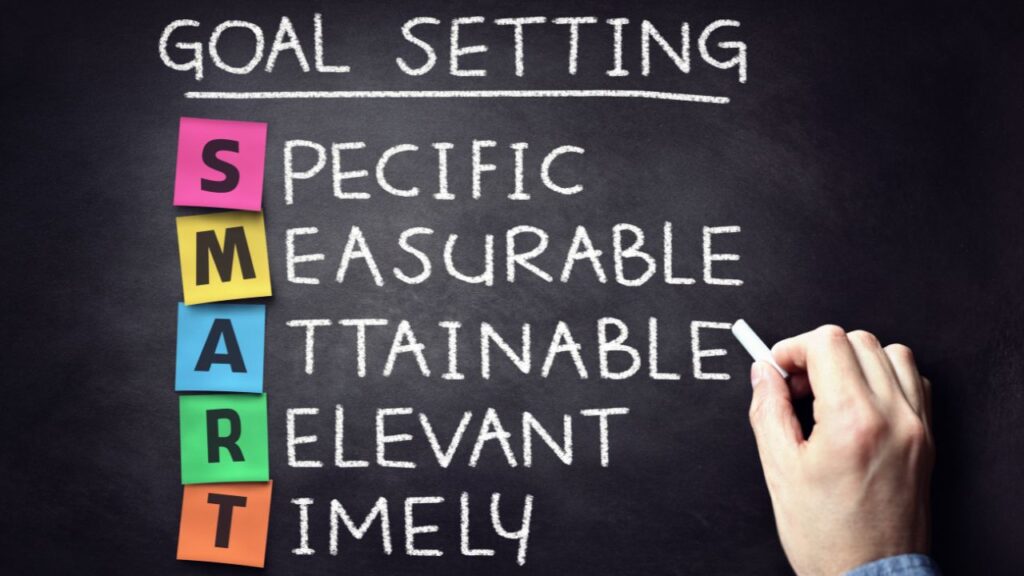Setting Intentions vs. Goals: What’s the Difference?
In the pursuit of a meaningful and fulfilling life, most of us have been told to “set goals” — to write them down, visualize them, and work toward them relentlessly. Goals are familiar territory in self-development, business, and education. But there’s another, often overlooked, concept that can be just as powerful (and sometimes more transformative): intentions.
While both intentions and goals can help us improve our lives, they operate differently. Goals are about what you want to achieve; intentions are about how you want to live and show up in each moment. One is destination-oriented; the other is presence-oriented.
In this article, we’ll dive deep into the differences, explore how they work together, and share practical steps to weave both into your life for a more balanced, purposeful, and joy-filled existence.

1. Understanding the Basics: Definitions Matter
Let’s start by clarifying what each term means.
What Is a Goal?
A goal is a specific, measurable outcome you want to achieve in the future. Goals are often tied to timelines, benchmarks, and external results. They require planning, strategizing, and effort toward a clear endpoint.
Examples:
- “Lose 10 pounds in the next three months.”
- “Save $5,000 by the end of the year.”
- “Write a book by December.”
Goals give you direction and motivation. They are about doing and are inherently future-focused.
What Is an Intention?
An intention is a guiding principle for how you want to live, behave, or feel in the present moment. It’s less about checking off an achievement and more about aligning your daily actions with your deeper values and desired state of being.
Examples:
- “I intend to approach challenges with patience.”
- “I intend to nourish my body with healthy, whole foods.”
- “I intend to be fully present in conversations.”
Intentions are about being. They are rooted in your current mindset and choices rather than a far-off destination.
2. The Key Differences Between Intentions and Goals
While they may seem similar on the surface, intentions and goals differ in several fundamental ways:
| Aspect | Goals | Intentions |
|---|---|---|
| Focus | Future outcome | Present state |
| Nature | External achievements | Internal alignment |
| Measurement | Quantifiable milestones | Qualitative feelings and behaviors |
| Timeframe | Has a deadline | Ongoing practice |
| Example | “Run a marathon in October” | “Run with joy and gratitude for my body” |
In short: Goals are about “what” you want; intentions are about “how” you want to experience the journey.
3. Why Intentions Matter
We live in a culture obsessed with achievement. Goals dominate our to-do lists, work reviews, and even personal resolutions. But if we’re only focused on results, we risk feeling unfulfilled even when we succeed.
Intentions bring us back to the present moment — they encourage us to notice how we’re showing up in life right now, not just where we want to be. They help:
- Reduce stress by shifting focus from outcomes to actions.
- Build self-awareness and emotional intelligence.
- Create a sense of purpose even when goals aren’t met.
- Foster gratitude and mindfulness in daily life.
4. Why Goals Still Matter
This isn’t a call to abandon goals. Goals are powerful because they:
- Provide clarity on what you want.
- Motivate consistent effort.
- Help track progress and measure success.
- Stretch your abilities and comfort zones.
Without goals, intentions may lack structure; without intentions, goals may lack meaning.

5. How Intentions and Goals Work Together
The magic happens when you combine the two. Goals give you a destination; intentions guide your journey toward that destination.
Example:
- Goal: “Launch my own online business in 12 months.”
- Intention: “Approach each step of building my business with curiosity, persistence, and self-compassion.”
This pairing ensures that even if the goal takes longer than expected (or changes entirely), you still live in alignment with your deeper values.
6. Setting Powerful Intentions
To set meaningful intentions:
- Reflect on Your Values – What matters most to you? Kindness? Health? Freedom? Creativity?
- Focus on the Present – Use language that emphasizes the now, such as “I choose to…” or “I am open to…”
- Keep It Positive – Avoid framing in terms of what you don’t want.
- Make It Emotional – Connect it to a feeling you wish to cultivate.
Examples:
- “I intend to live each day with gratitude.”
- “I intend to listen more than I speak.”
- “I intend to care for my body with love.”
7. Setting Effective Goals
To set achievable goals, use the SMART framework:
- Specific: Define the exact outcome.
- Measurable: Include clear criteria for tracking.
- Achievable: Ensure it’s realistic for your resources and time.
- Relevant: Align with your bigger life vision.
- Time-bound: Set a deadline.
Example:
Instead of “Get fit,” say, “Exercise 30 minutes a day, 5 days a week, for the next 3 months.”
8. Common Mistakes People Make
With Goals:
- Setting too many at once.
- Focusing only on external validation.
- Ignoring emotional and mental well-being.
With Intentions:
- Making them vague without connecting them to action.
- Forgetting to revisit them regularly.
- Using them as an excuse to avoid measurable effort.

9. Daily Practices to Live with Both
- Morning Check-in: Start your day by stating your main intention and reviewing your top goal-related tasks.
- Mindful Reminders: Keep your intention visible — sticky notes, phone wallpapers, or journal entries.
- Evening Reflection: Ask, “Did I live my intention today?” and “What progress did I make toward my goals?”
- Gratitude Practice: Notice small wins and ways your intention shaped your day.
10. Real-Life Examples
- Fitness:
- Goal: “Complete a 10K run by May.”
- Intention: “Enjoy and honor my body through movement.”
- Career:
- Goal: “Get promoted to senior manager this year.”
- Intention: “Lead with empathy and inspire my team daily.”
- Relationships:
- Goal: “Plan a trip with my partner this summer.”
- Intention: “Deepen our connection through shared experiences.”
11. When to Prioritize One Over the Other
- Prioritize Goals when you need measurable progress — e.g., paying off debt, completing a project, or learning a skill.
- Prioritize Intentions when you’re seeking personal growth, healing, or presence — e.g., after burnout, during transitions, or while navigating uncertainty.
12. The Emotional Shift That Happens
When you start living with both goals and intentions, you’ll notice:
- Less frustration when timelines change.
- More joy in everyday actions.
- A deeper sense of purpose beyond achievements.
- Greater resilience in setbacks.

13. Putting It All Together: A Step-by-Step Plan
- Identify a Big Goal – Write it clearly.
- Uncover the Why – Ask, “Why do I want this?”
- Create a Matching Intention – Ensure it reflects your values and desired way of being.
- Break Down the Goal – Plan small, actionable steps.
- Practice the Intention Daily – Let it influence how you approach each step.
- Review and Adjust – Revisit your goals and intentions regularly to ensure they’re still aligned with your evolving life.
Final Thoughts
Goals and intentions aren’t opposites — they’re partners. Goals give you a tangible target; intentions ensure that the way you travel toward that target enriches your life. By marrying the two, you not only accomplish more but also experience more meaning and fulfillment along the way.
So, set your sights high, but remember: how you walk the path matters just as much as where you’re going.
If you want, I can also create a Spanish translation of this article so it works for your bilingual health, wellness, or self-development content library. Would you like me to do that next?



